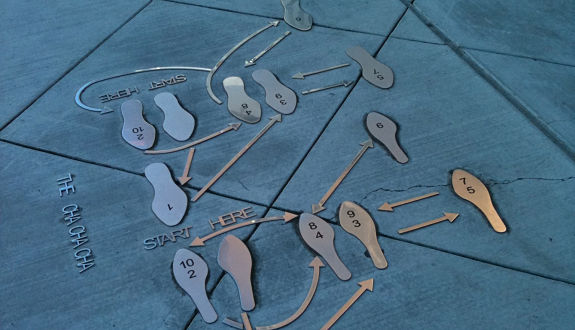Attack the Gap: Weakening Arguments on the LSAT
- by
- Aug 30, 2019
- LSAT
- Reviewed by: Matt Riley


Sometimes you’re just sick and tiring of arguing all the time, and so even if the other person is wrong, you just let it go. Maybe even if you have the perfect rejoinder, albeit a bit too late. Unfortunately the LSAT doesn’t give us that option; when it tells us we need to attack an argument, we need to be ready to do so. And that brings us to Weaken Questions.
The first thing to remember when being asked to weaken an argument is that the argument has to be flawed in some way. And by flawed, I mean that the premises aren’t enough by themselves to logically prove the conclusion to 100% certainty. There’s always an opening to attack, a gap between the premises and conclusion, an assumption inherent to the argument that can be exploited. We need to identify that assumption and find an answer choice that makes it untrue or at least unlikely. So how do we do this?
First we need to identify whether the stimulus contains causal reasoning or not. “Because of,” “a cause of,” “plays a role in” are all phrases that indicate one thing or phenomenon is a cause of another thing or phenomenon; alternately, “an effect” or “as a result” indicates an effect of some cause. For example, if there are two things in the argument being linked in such a way as one happens before the other, and the stimulus is trying to prove to us that the first thing made the second thing happen, we’re dealing with a causal relationship.
An example: Don is really messy and never cleans up after he cooks anything on the stove. Food gets left everywhere on the floor and around the kitchen, and now there are mice running around, pooping in all the cabinets and making noise in the walls. Yesterday Don noticed that the some of the light switches and electrical outlets aren’t working anymore. Obviously the mice that were attracted by the disaster in his kitchen have been chewing up the wiring.
The conclusion here is certainly possible, but it’s not proven beyond any shadow of a doubt by the premises. It’s assuming that there are no other ways for the outlets to stop working. What if Don has a musician roommate who put all his equipment on one outlet and blew a fuse? That’s also a possible and plausible alternate cause for the effect of Don’s electrical problems. Alternate causes are the easiest and most common way to weaken a causal argument, so always anticipate running into one in the answer choice.
They’re not the only, however; we could mention that Don’s brother John is just as disgusting as Don, but, despite having lived in the same apartment, with a mouse infestation, for the last 10 years, has never had any electrical problems. That’s the same cause, but no effect. Or we could mention Don’s cousin, a complete clean-freak, who has never so much as heard of mice, but can’t get his bathroom light to turn off no matter how hard he flips the switch. Same effect, no cause. These show the alleged cause doesn’t always lead to the effect, or the effect is not always preceded by the alleged cause. In other words, they show the cause and effect relationship stated in the argument doesn’t hold true in similar situations, thus making the relationship less certain for Don and his mice.
So what happens when there isn’t any causation in the stimulus? These can be some of the toughest Logical Reasoning questions and absolutely require a thorough understanding of the stimulus and any assumptions being made in it. A very common issue is the comparison fallacy, where two things are assumed to be alike simply because they share a superficial or unimportant trait, leading to a false inference being made about one of them. For example, if I were to tell you that Jenny wears size-3 jeans and is a world-class endurance runner, holding several world records, and that Mary also wears size-3 jeans, so she must be a world-class endurance runner too, you’d probably give me a look like this. And rightfully so, as clearly jean size has no relationship to how good of a runner a person is. A weaken answer might point this out by mentioning Dana, who also wears size-3 jeans, is an awful runner with no stamina and can barely walk 10 feet without running out of breath.
So whenever you’re faced with a Weaken question, always make sure that you’re identifying why the argument is flawed before diving into the answer choices. There will always be a logical gap in the stimulus, and it’s your job to widen by destroying an assumption being made. It doesn’t have to necessarily disprove the argument, but it must make it less likely to be true by making the evidence for it shakier.
Search the Blog

Free LSAT Practice Account
Sign up for a free Blueprint LSAT account and get access to a free trial of the Self-Paced Course and a free practice LSAT with a detailed score report, mind-blowing analytics, and explanatory videos.
Learn More
Popular Posts
-
logic games Game Over: LSAC Says Farewell to Logic Games
-
General LSAT Advice How to Get a 180 on the LSAT
-
Entertainment Revisiting Elle's LSAT Journey from Legally Blonde








